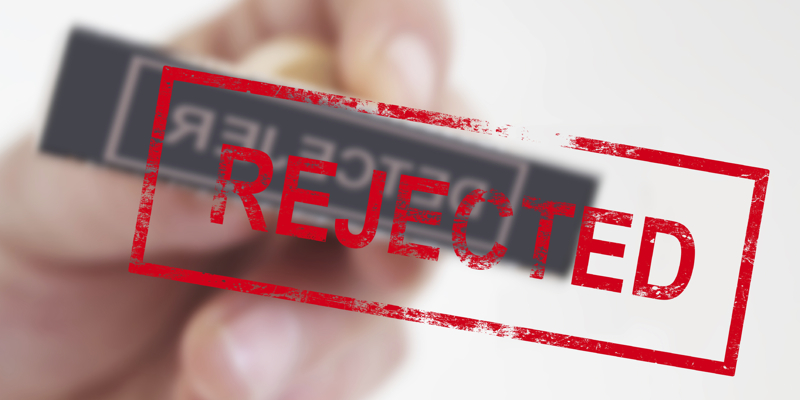"A rejection is nothing more than a necessary step in the pursuit of success." Bo Bennett
I have a fear of rejection.
Who doesn't.
I don't just have a fear of rejection, I also have a fear of that awful, awkwardness that follows rejection.
Ugh.
In the past my fear got in my way, and I avoided taking risks or asking for something.
But in order to grow I needed to step past my comfort zone, risk rejection, and handle potential embarrassment. So I developed a simple technique to fight the fear of rejection, and take the pressure out of the uneasiness that follows.
Pre-rejection.
Pre-rejection is like being pre-qualified.
When you're pre-qualified you know what you can afford and can shop with confidence up to that limit. When you have a pre-rejection plan you prepare for the various rejection responses that might happen. Then you have confidence that you can handle any situation with poise.
Before making a proposal or asking for a change, I write out potential objections and rejections and think of gracious responses and exit strategies. Instead of worrying about a potential that may not happen, pre-rejection frees up my brain space to focus on the task at hand. And in the event of rejection, it smoothes over the awkwardness for me and the other party, and we can part on a postive note.
Ready to try to pre-rejection process?
Here are 3 plug-n-play formulas I use to generate responses.
Response to "thanks but no thanks..."
- Acknowledge that it's a "no"
- Acknowledge the reason
- Build a bridge
- Keep the dialogue open for the future
-
Or offer a different solution
"I'm sorry we couldn't make it work, that's less than I'm willing to take at this time. I like the direction you're headed and If there's a change in the future please keep me in mind."
"I understand the circumstance changed and your staffing plans went in a different direction. I enjoyed meeting you and thought we had good synergies. If you need some short term help, I'm available on a consultation basis."
Bonus! An effective and gracious response often opens a door for other options and negotiations.
Response to my worst case scenario: someone laughing me.
- Acknowledge the situation head on.
- Build the bridge
-
Walk away and don't worry about the awkwardness
"Oh. That's not the response I expected. I guess we weren't on the same page. I appreciate the consideration, but I can see it won't work out."
A graceful exit when I interrupt a group conversation, but not welcomed in.
- Apologize
- Accept responsibility
- Excuse myself
-
(Build a bridge if it makes sense)
"Oh, sorry. I didn't mean to be disruptive. Excuse me (I'll catch up with you later)."
Are you letting the the fear of rejection stop you from trying, asking, or doing?
Try the pre-rejection process.
Practice rejection before it happens. Afterwards ask yourself "what more can the other party do?" Then smile and say,
"Not much."
Looking for other insights? Take a look at this popular posts on Evoke.
Check out the Unlock Your Potential page for more insight and inspiration.
Follow Evoke.pro on LinkedIn.
Photo iStock

